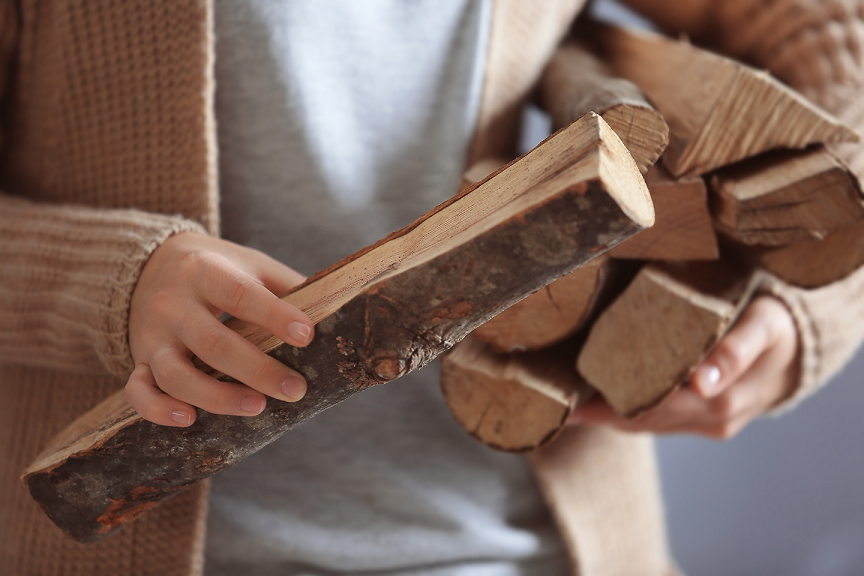Ecocentricity Blog: Energy Burdens
By: John A. Lanier

Ecocentricity Blog: Energy Burdens
The holiday season is fully upon us, and goodness was I ready for it this year. The cool air, the warm drinks, the twinkling lights, the out-of-office email responses...I’m here for all of it. Okay, maybe not all of it. I’ll still take a hard pass on the excessive consumerism that accompanies the last six weeks of the year. I’ve already recycled that blog a few times though, so I’ll actually write something new this year.
In my family, a big part of our holiday cheer comes from the traditional ambiance associated with Christmas. We put up a wreath, a tree, lights, and stockings. We light candles that smell of spice, fir, and apples. We play music of the season. We make hot chocolate and bake cookies. It’s a five senses affair in our house, and we wouldn’t have it any other way.
This year, that includes lighting a fire in our fireplace. We’ve tended not to for the past five years, only because it made us nervous with young children underfoot. We now trust our youngest not to get too close though, and it’s been nice to add the warmth of the fire to our holiday season. Heck, our kids have even gotten good at lighting the fire themselves! Admittedly, all it takes is a flip of a light switch to get our gas fireplace going.
Taking a step back, I’m fully aware of how privileged that last sentence is. For tens of thousands of years, lighting a fire has been a matter of survival for humans. We’ve needed it to stay warm, make tools, and cook our food. Fires often require great amounts of effort, from gathering and splitting wood to creating an ember through friction. Now, all I have to do is say to my three-year-old, “Hey Cecilia, mind turning the fire on?”
Our little fireplace is an environmental and social privilege too. The environmental privilege is obvious - our fireplace burns fossil fuel and releases greenhouse gases into the atmosphere. For that reason, we only light the fire sparingly. The reason it’s a social privilege is less obvious though, and to explain, let me tell you what an energy burden is.
A person’s energy burden is a mathematical formula where you divide the amount of money they spend on electricity and gas in a year by the amount of income they earn in a year. The result is a percentage showing how much income is dedicated to keeping lights on, staying warm in the winter, and staying cool in the summer. According to the American Council for an Energy-Efficient Economy (ACEEE), an energy burden above 6% is high and above 10% is severe.
I just calculated mine for 2020 and it shook out to 1.64%. Clearly, my energy burden is not terribly burdensome, for which I am grateful! But just how privileged I am becomes clear when I compare my energy burden to others in my city. Here is the ACEEE 2020 report for Atlanta, and it shows that the median energy burden is 3.5%. However, when you look at the median energy burden for low-income households (defined as homes earning twice the federal poverty level or less), it’s a punch in the gut - 9.7%. A full quarter of low-income households in my city have an energy burden above 16%! The racial divide exists here as well, with 36% of black households and 35% of Hispanic households having a high energy burden compared to 28% of all Atlanta households.
So while my family and I light a fire to create a mood, many in our community are struggling to afford to keep their whole houses warm. That, once again, is privilege. So what is to be done? Well, take a look at the link I provided for the Atlanta report above. The second page provides a great list of strategies to address high energy burdens, and while it is tailored to Atlanta specifically, the strategies are applicable anywhere. We need policymakers and utilities to set energy burden goals, we need funding for low-income weatherization, we need programs that are thoughtfully designed to engage with communities, and we need people to understand the linkages between energy burdens, inadequate housing, and poor health.
I hope you have a warm and bright holiday season. And let’s all be mindful of those in our communities for whom the warmth and the brightness are harder to come by.
This blog is available weekly via email subscription. Click here to subscribe.
Ecocentricity Blog: Farming Squared

